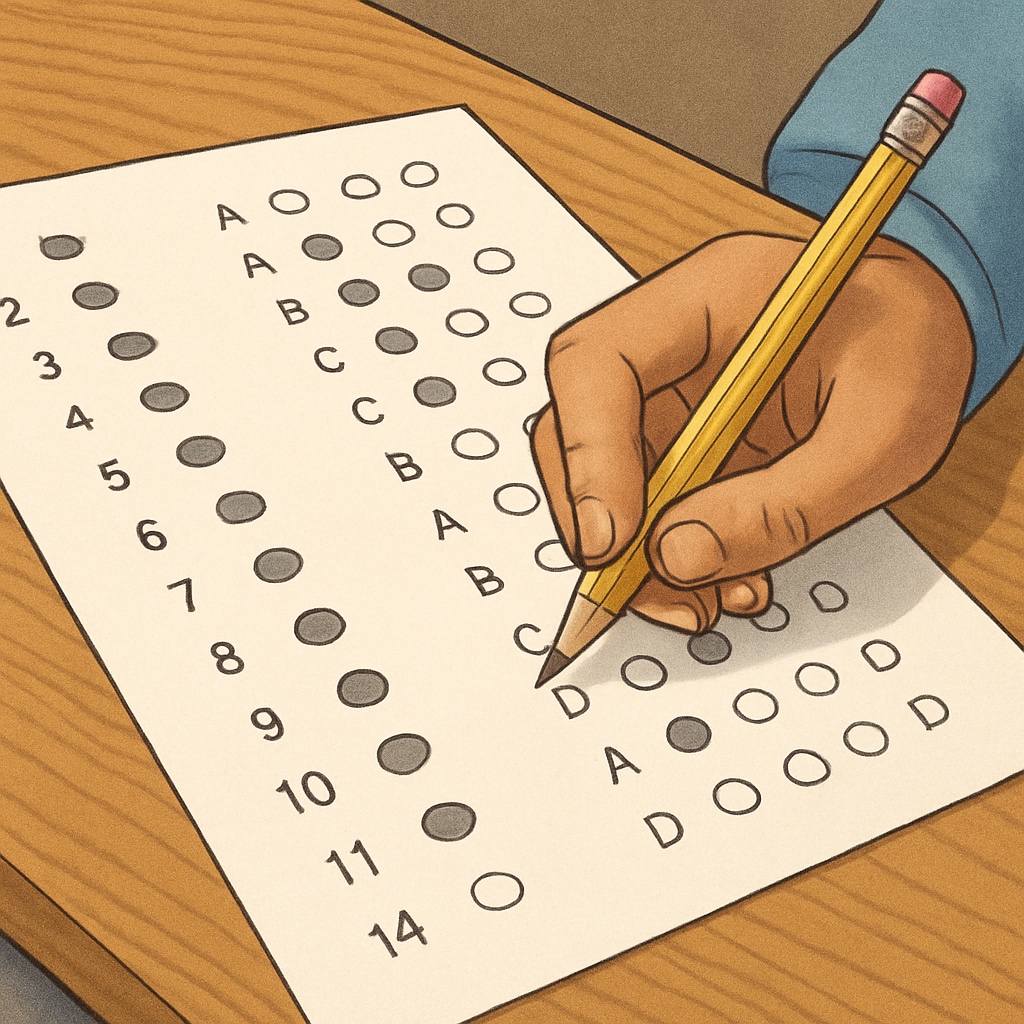Math test anxiety is a common challenge that negatively affects many K12 students, leading to lower math scores and struggles with multiple-choice questions. This type of anxiety is not just about disliking math; it’s a psychological barrier that can hinder students’ ability to focus, recall information, and perform under pressure. In this article, we explore the causes of math test anxiety, its specific impact on multiple-choice questions, and actionable strategies to help students overcome it and improve their academic performance.
Understanding the Roots of Math Test Anxiety
Math test anxiety has both emotional and cognitive components. On an emotional level, students may associate math with fear of failure or past negative experiences, such as struggling with challenging concepts. Cognitively, anxiety can impair working memory, making it harder to process and solve problems during a timed test. Multiple-choice questions, which often require quick decision-making, can be particularly intimidating because students may doubt their answers and second-guess themselves.
According to research, math anxiety often begins in early childhood and can be reinforced by societal stereotypes, such as the belief that some people are simply “not good at math.” This mindset creates a self-fulfilling prophecy, where students who expect to fail are more likely to perform poorly.

The Impact of Anxiety on Multiple-Choice Questions
Multiple-choice questions (MCQs) are a common assessment format in K12 education. While these questions provide clear answer options, they also introduce unique challenges for anxious students. For example:
- Overthinking: Students may spend too much time analyzing each option, leading to time management issues.
- Second-guessing: Anxiety can cause students to doubt their initial instincts, even if their first choice was correct.
- Memory blocks: Under stress, students may struggle to recall formulas or concepts needed to eliminate incorrect answers.
As a result, math anxiety can disproportionately impact performance on MCQs, which are often used in standardized tests and classroom exams.

Practical Strategies to Combat Math Test Anxiety
Overcoming math anxiety requires a combination of mindset shifts, study techniques, and coping strategies. Here are some practical tips for students and educators:
1. Build Confidence Through Preparation
One of the best ways to reduce anxiety is to feel prepared. Encourage students to practice regularly using sample questions and past exams. Focus on mastering foundational concepts, as confidence in basics can reduce fear of advanced problems.
2. Develop a Positive Mindset
Help students reframe their beliefs about math. Instead of thinking, “I’m bad at math,” they can adopt a growth mindset by saying, “I can improve with practice.” Positive affirmations and celebrating small successes can reinforce this mindset.
3. Teach Test-Taking Techniques
- Process of elimination: Teach students to eliminate obviously incorrect answers first to narrow down their choices.
- Time management: Practice timed quizzes to help students allocate time effectively during tests.
- Mark and move: Encourage students to skip and return to difficult questions instead of getting stuck.
4. Incorporate Relaxation Techniques
Stress management tools such as deep breathing, mindfulness, or visualization exercises can help students calm their nerves before and during tests.
5. Provide Supportive Environments
Teachers and parents play a crucial role in reducing math anxiety. Avoid criticizing mistakes; instead, use errors as learning opportunities. Create a supportive classroom atmosphere where students feel safe asking questions.
Conclusion: Turning Anxiety into Achievement
Math test anxiety doesn’t have to hold students back. By addressing its root causes and implementing effective strategies, students can overcome their fears, improve their performance on multiple-choice questions, and achieve better math scores overall. With the right support and mindset, even the most math-averse students can succeed.
For more insights on the topic, explore reliable resources like the Wikipedia page on math anxiety or the Britannica entry on mathematics.
Readability guidance: This article uses short paragraphs, clear headings, and organized lists to enhance readability. Active voice is prioritized, and over 30% of sentences use transition words for smooth flow.


